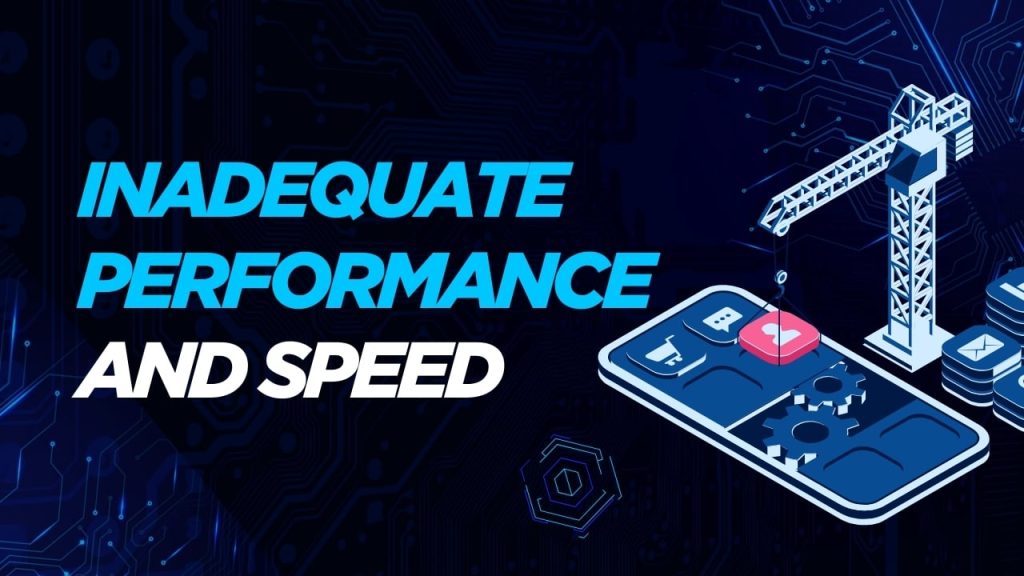Mobile banking has moved from a luxury to an expectation. Today’s users want more than just account access—they want security, speed, and smart financial tools packed into a single app. However, building such a feature-rich app is no easy task.
Banking app development presents its own unique challenges, from compliance to UX to real-time infrastructure. Let’s break down the most common issues developers face and how to solve them before they spiral into larger problems.
Common Challenges in Banking App Development
When you create a banking app, there are many challenges that you can come across; here’s the list that defines them all.
1. Security and Data Privacy Risks
The Issue:
Protecting financial data isn’t just a feature—it’s a must. Imagine if your bank left the door wide open for hackers; trust would vanish overnight, and so would customer loyalty. Plus, security breaches can lead to hefty fines and legal trouble.
Common threats include:
- Unencrypted data transmission
- Weak authentication
- Insecure APIs
- Device-level vulnerabilities
The Solution:
- Implement multi-layered security: Use biometric authentication, two-factor authentication (2FA), and real-time risk assessment.
- Use data encryption: Encrypt data in transit and at rest using AES-256 or similar standards.
- Conduct regular penetration testing to find and fix vulnerabilities.
- Adopt zero-trust architecture: Treat every access request as suspicious until proven otherwise.
Don’t just think like a developer—think like a hacker and fortify accordingly.
2. Regulatory Compliance & Legal Requirements

The Issue:
Banking apps must comply with a wide range of regulations, from GDPR and PSD2 in Europe to PCI-DSS and FFIEC in the U.S. Non-compliance can lead to fines or app takedowns.
The Solution:
- Build with compliance in mind from day one—don’t retrofit.
- Partner with legal experts who understand your market.
- Integrate KYC and AML protocols into onboarding flows.
- Ensure data storage and processing align with jurisdictional laws.
- Use RegTech APIs for real-time compliance monitoring.
Keep in mind: compliance isn’t a one-time checkbox—it’s an ongoing process.
3. Poor User Experience (UX)
The Issue:
If your app isn’t easy to use, users won’t stick around. Overcomplicated flows, unintuitive layouts, or missing essential features can all kill adoption.
The Solution:
- Use clean, minimal interfaces with a focus on accessibility.
- Offer personalized dashboards using AI and user behavior insights.
- Avoid burying essential actions—prioritize account info, bill payments, transfers, and statements.
- Incorporate dark mode, voice search, and regional language support.
Use real feedback loops. Test with real users, iterate, and release updates often.
4. Integration with Legacy Systems
The Issue:
Most banks still rely on legacy infrastructure. Connecting new mobile apps with decades-old mainframes can lead to delays, bugs, or partial functionality.
The Solution:
- Use API gateways to decouple the mobile app from backend systems.
- Introduce microservices to gradually modernize your backend architecture.
- Adopt middleware solutions that translate legacy protocols into mobile-friendly formats.
- Establish a strong DevOps pipeline for smoother updates and integration.
Modern UX doesn’t have to be built on modern systems—but integration needs to be smart, stable, and scalable. That’s where the best banking app development services can make the difference between an average app and a market leader.
5. Inadequate Performance and Speed

The Issue:
Banking apps must be fast. Delays in logging in, loading account history, or completing a payment can create frustration and drop-offs.
The Solution:
- Optimize database queries for transaction-heavy use cases.
- Use caching strategies for non-sensitive, frequently used data (like FAQs or help content).
- Run load testing to see how the app performs under pressure.
- Use CDNs and edge computing for faster geographic delivery.
For users, milliseconds matter. Performance is a silent trust-builder in finance apps.
6. Lack of Real-Time Features
The Issue:
Users now expect real-time updates—whether it’s a transaction alert, balance change, or suspicious login attempt. Delays or outdated info break trust.
The Solution:
- Implement event-driven architecture for real-time updates.
- Use push notifications for alerts, with granular user control.
- Integrate WebSockets for continuous data sync.
- Work with third-party services that offer real-time financial APIs.
Make real-time responsiveness a baseline, not a premium feature.
7. Device Fragmentation and OS Compatibility
The Issue:
Banking apps must work across a wide range of devices, operating systems, screen sizes, and resolutions. Testing across all these can be a nightmare.
The Solution:
- Use cross-platform frameworks like Flutter or React Native (if appropriate).
- Maintain device farms or use cloud testing tools like BrowserStack.
- Ensure updates are backward-compatible with older OS versions.
- Create adaptive layouts that respond to screen variations.
Uniform performance across devices builds confidence in your app.
8. High Drop-Off During Onboarding
The Issue:
Many users abandon banking apps before even finishing the sign-up process. Long forms, identity verification, or technical hiccups turn them away.
The Solution:
- Shorten the onboarding flow with progressive steps.
- Allow guest mode access with limited features.
- Use smart OCR and facial recognition for faster KYC.
- Provide clear progress indicators and success/failure messages.
Make onboarding fast, secure, and user-friendly. Your conversion rate depends on it.
9. Limited Accessibility and Inclusivity
The Issue:
Not all users interact with banking apps the same way. Users with visual impairments, cognitive disabilities, or older devices may find the app unusable.
The Solution:
- Follow WCAG accessibility standards.
- Enable screen reader compatibility, adjustable font sizes, and high-contrast modes.
- Add voice command features for ease of navigation.
- Design with inclusive UX patterns and avoid visual clutter.
Inclusive apps don’t just reach more users—they retain them better, too.
10. Lack of Scalability Planning

The Issue:
Most banking apps start small and struggle to scale with growth—leading to outages, data lags, and user dissatisfaction.
The Solution:
- Choose a cloud-native architecture for auto-scaling.
- Use modular microservices to scale components independently.
- Integrate load balancers and auto-failover systems.
- Monitor with tools like Datadog or New Relic for early alerts.
Plan for scale from the start—it’s harder and more expensive to fix it later.
Final Thoughts
The journey of building a secure, efficient, and user-friendly banking app is full of challenges. Yet every obstacle—no matter how technical or complex—can be solved with the right team, technology, and planning in place.
When choosing a partner for your mobile banking app, it’s important to look beyond basic feature checklists. What truly matters is working with developers who understand the nuances of finance, user psychology, and regulatory frameworks. That’s why companies often turn to experienced teams, such as JPLoft, who have spent years building reliable banking and fintech solutions that balance innovation with compliance.

